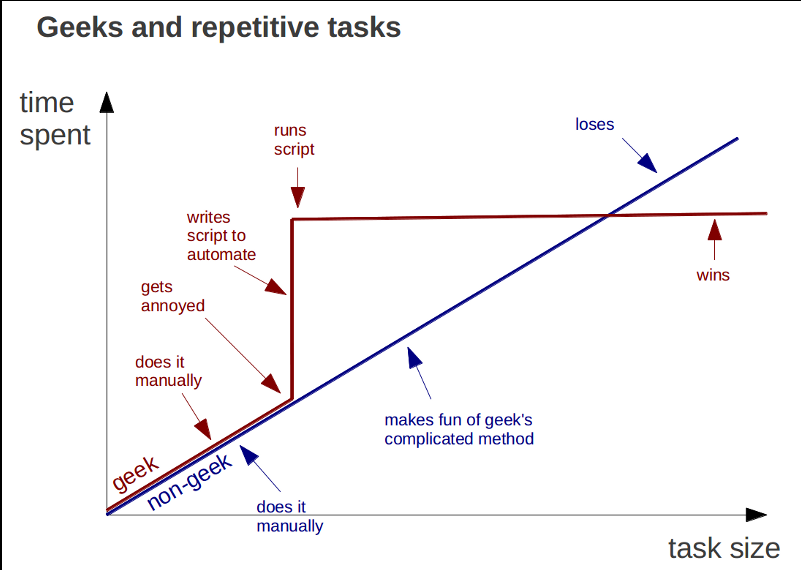Writing Reusable Code with Functions

Let’s say you want to do this…
Make a DF with 4 columns of random numbers.
Standardize EACH variable relative to it’s minimum and maximum, after subtracting the minimum.
You could….
df <- tibble::tibble(
a = rnorm(10),
b = rnorm(10),
c = rnorm(10),
d = rnorm(10)
)
df$a <- (df$a - min(df$a, na.rm = TRUE)) /
(max(df$a, na.rm = TRUE) - min(df$a, na.rm = TRUE))
df$b <- (df$b - min(df$b, na.rm = TRUE)) /
(max(df$b, na.rm = TRUE) - min(df$a, na.rm = TRUE))
df$c <- (df$c - min(df$c, na.rm = TRUE)) /
(max(df$c, na.rm = TRUE) - min(df$c, na.rm = TRUE))
df$d <- (df$d - min(df$d, na.rm = TRUE)) /
(max(df$d, na.rm = TRUE) - min(df$d, na.rm = TRUE))Some wrong things
Copy-pasting is error prone
Repeated code can get long
Not scalable
You were doing 4 things in each line of code! Unreadable?
A Funcitonal Outline
Intro to Functions
Let’s Write Some Functions!
More than One Argument
How to Build a Function
When to write a function
“You should consider writing a function whenever you’ve copied
and pasted a block of code more than twice”
- H. Wickham
Ugh…
df <- tibble::tibble(
a = rnorm(10),
b = rnorm(10),
c = rnorm(10),
d = rnorm(10)
)
df$a <- (df$a - min(df$a, na.rm = TRUE)) /
(max(df$a, na.rm = TRUE) - min(df$a, na.rm = TRUE))
df$b <- (df$b - min(df$b, na.rm = TRUE)) /
(max(df$b, na.rm = TRUE) - min(df$a, na.rm = TRUE))
df$c <- (df$c - min(df$c, na.rm = TRUE)) /
(max(df$c, na.rm = TRUE) - min(df$c, na.rm = TRUE))
df$d <- (df$d - min(df$d, na.rm = TRUE)) /
(max(df$d, na.rm = TRUE) - min(df$d, na.rm = TRUE))What is a function?
What is a function?
- A new object
- A call identifying this as a function
- One or more arguments
- The body of the function
- A return statement that gives something back to the user (if needed)
What is a function?
What is a function?
[1] 4Simpler ways of writing functions
A Funcitonal Outline
Intro to Functions
Let’s Write Some Functions!
More than One Argument
How to Build a Function
Let’s write some functions
[1] 4Let’s write some functions
Should return 4
Let’s write some functions
max_minus_min <- _______(___){
ret_value <- ___(___) - ___(___)
___(___)
}
max_minus_min(c(4,7,1,6,8))[1] 7A Funcitonal Outline
Intro to Functions
Let’s Write Some Functions!
More than One Argument
How to Build a Function
On arguments
Functions can take many arguments:
These can be of any object type
Arguments can have default values
[1] 3You can have … to pass many arguments
make_mean <- function(a_vector, ...){
sum_vector <- sum(a_vector, ...)
n <- length(a_vector)
return(sum_vector/n)
}
make_mean(c(4,5,6), na.rm=TRUE)[1] 5Exercises
Write a function and paste it into the etherpad that
- Takes a vector and sums it up after it squares it
- use
c(4,5,6)to test (= 77)
- use
- Takes a number and combine it into a string with the word
“elephants” using
paste().- 1 elephants, 2 elephants, 15 elephants
- Takes a number, a string, and a separator and combines them
- my_function(3, “hello”, “-”) makes “3 - hello”
Why are we doing this to ourselves?

A Funcitonal Outline
Intro to Functions
Let’s Write Some Functions!
More than One Argument
How to Build a Function
How did I build that function?
OK, what’s normally going to change
AND - what could change under some circumstances?
Write some test code (START WITH COMMENTS!)
Test Code
Test Code
Test Code
Test Code
Turn test code into a function
Our Final Workflow - So Readable!
dplyr says No Moar Copy Paste
When to write a function
“You should consider writing a function whenever you’ve copied
and pasted a block of code more than twice”
- H. Wickham